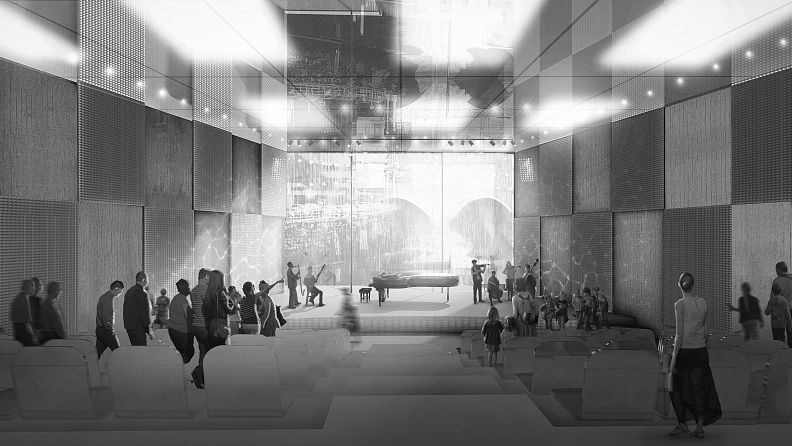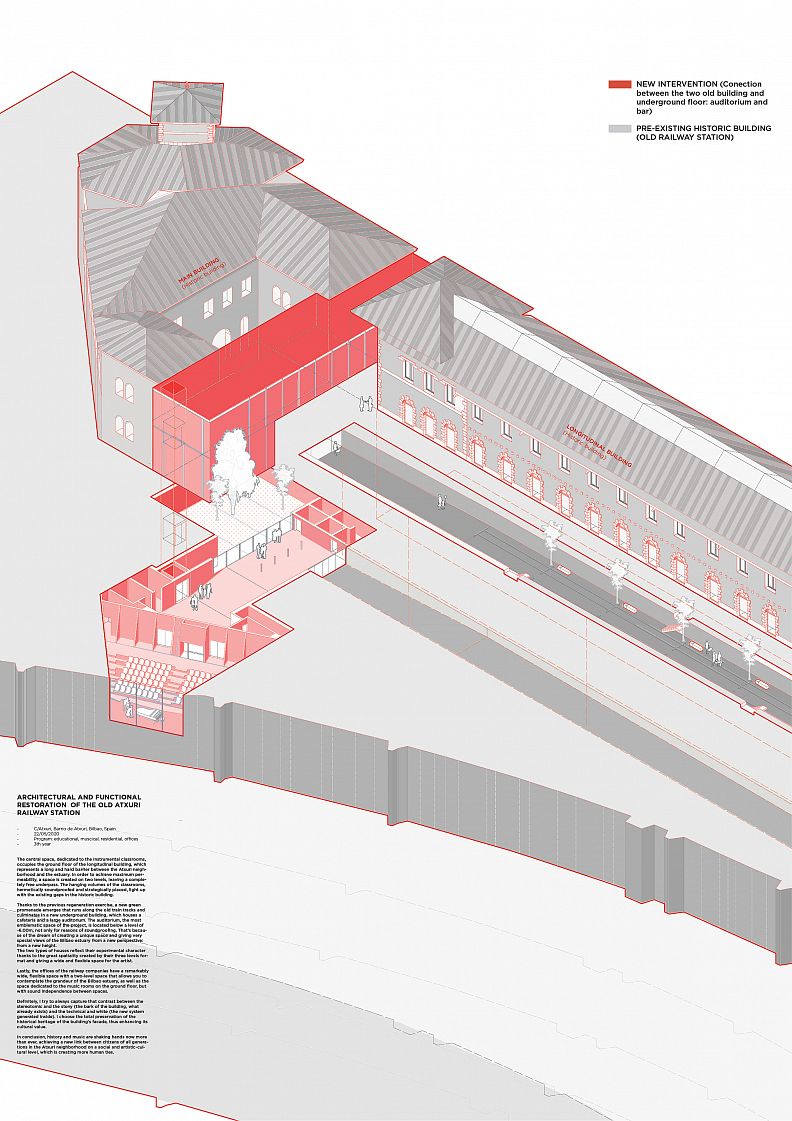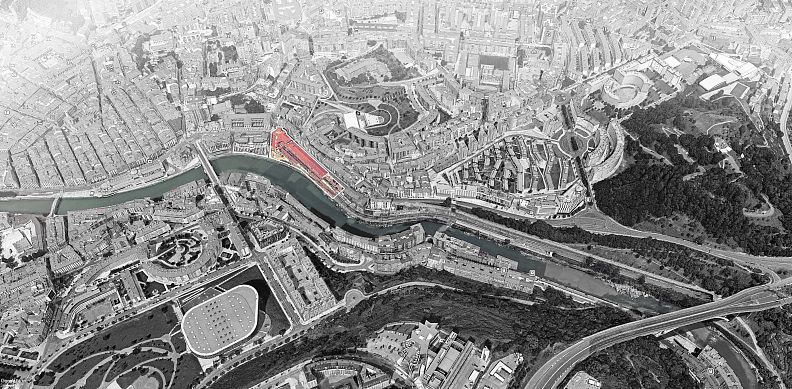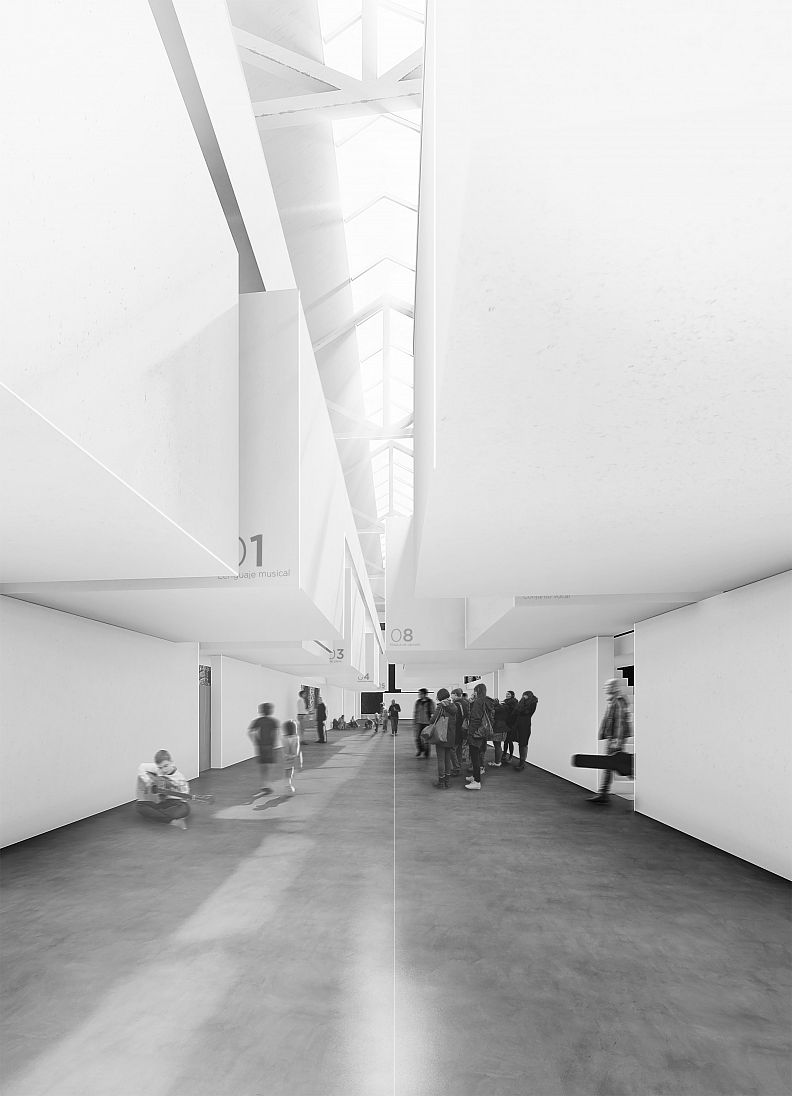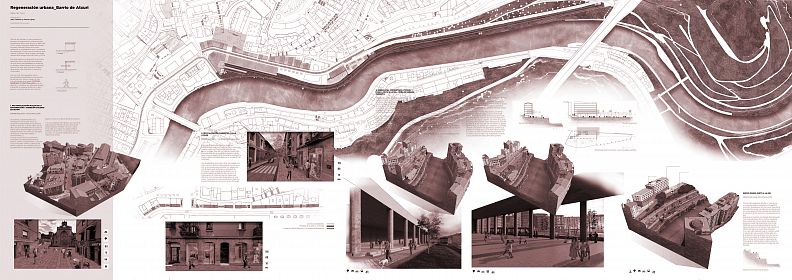Architectural and functional restoration of Bilbao Railway Station

Project idea
The unavoidable presence of the estuary, as a territorial backbone, and the proximity of the Old Town and historical buildings such as the bridge and the church of San Antón (15th century) or the Convent of La Encarnación (16th century), headquarters of the Museum of Sacred Art, make up an environment of unquestionable historical and landscape value.
In this urban context, which has already begun a process of change and regeneration, an intervention is proposed at the train station and its related spaces in order to include new uses and activities aimed at solving the functional needs of the Atxuri neighborhood.
After personally interviewing the residents of the neighborhood, I was able to get closer to the correct idea of the project, which could have real benefits for the local citizens of Bilbao in the future.
In order to satisfy the needs most demanded by the residents of the Atxuri neighborhood, the project proposes a new Music School/Conservatory, used as an excuse to unite people of very diverse generations who may not usually meet in the neighborhood and as an element that provides educational, therapeutic and social benefits to combat dropout and truancy. These musical activities that will be carried out go beyond the mere fact of teaching them music but rather of using it to transmit discipline, education, knowing how to be, and as a catalyst tool for emotions and aggressive impulses, promoting respect and uniting new social groups by creating ties of interaction between Bilbao students.
Project description
The central space, dedicated to the instrumental classrooms, occupies the ground floor of the longitudinal building, which represents a long and hard barrier between the Atxuri neighborhood and the estuary. In order to achieve maximum permeability, a space is created on two levels, leaving a completely free underpass. The hanging volumes of the classrooms, hermetically soundproofed and strategically placed, light up with the existing gaps in the historic building.
Thanks to the previous regeneration exercise, a new green promenade emerges that runs along the old train tracks and culminates in a new underground building, which houses a cafeteria and a large auditorium. The auditorium, the most emblematic space of the project, is located below a level of -6.00m, not only for reasons of soundproofing. That’s because of the dream of creating a unique space and giving very special views of the Bilbao estuary from a new perspective: from a new height.
The two types of houses reflect their experimental character thanks to the great spatiality created by their three levels format and giving a wide and flexible space for the artist.
Lastly, the offices of the railway companies have a remarkably wide, flexible space with a two-level space that allows you to contemplate the grandeur of the Bilbao estuary, as well as the space dedicated to the music rooms on the ground floor, but with sound independence between spaces.
Definitely, I try to always capture that contrast between the stereotomic and the stony (the bark of the building, what already exists) and the technical and white (the new system generated inside). I choose the total preservation of the historical heritage of the building's facade, thus enhancing its cultural value.
In conclusion, history and music are shaking hands now more than ever, achieving a new link between citizens of all generations in the Atxuri neighborhood on a social and artistic-cultural level, which is creating more human ties.
Technical information
The idea of the project is the total conservation of the historical heritage of the building's façade, thus enhancing its cultural value. Consequently, the entire interior of the building is emptied to rehabilitate it with the new planned services.
From a structural point of view, in some cases, new foundation elements appear, but they always respect the pre-existing foundations of the historic building. In addition, the location of the underground floor is totally strategically designed, so that it does not interfere with the historic building and is located near the estuary, allowing new views from the auditorium. Finally, from a constructive point of view, clear materials are always used which contrast with the historic stone façade, and these are a combination of reinforced concrete, plasterboard, or glass.
